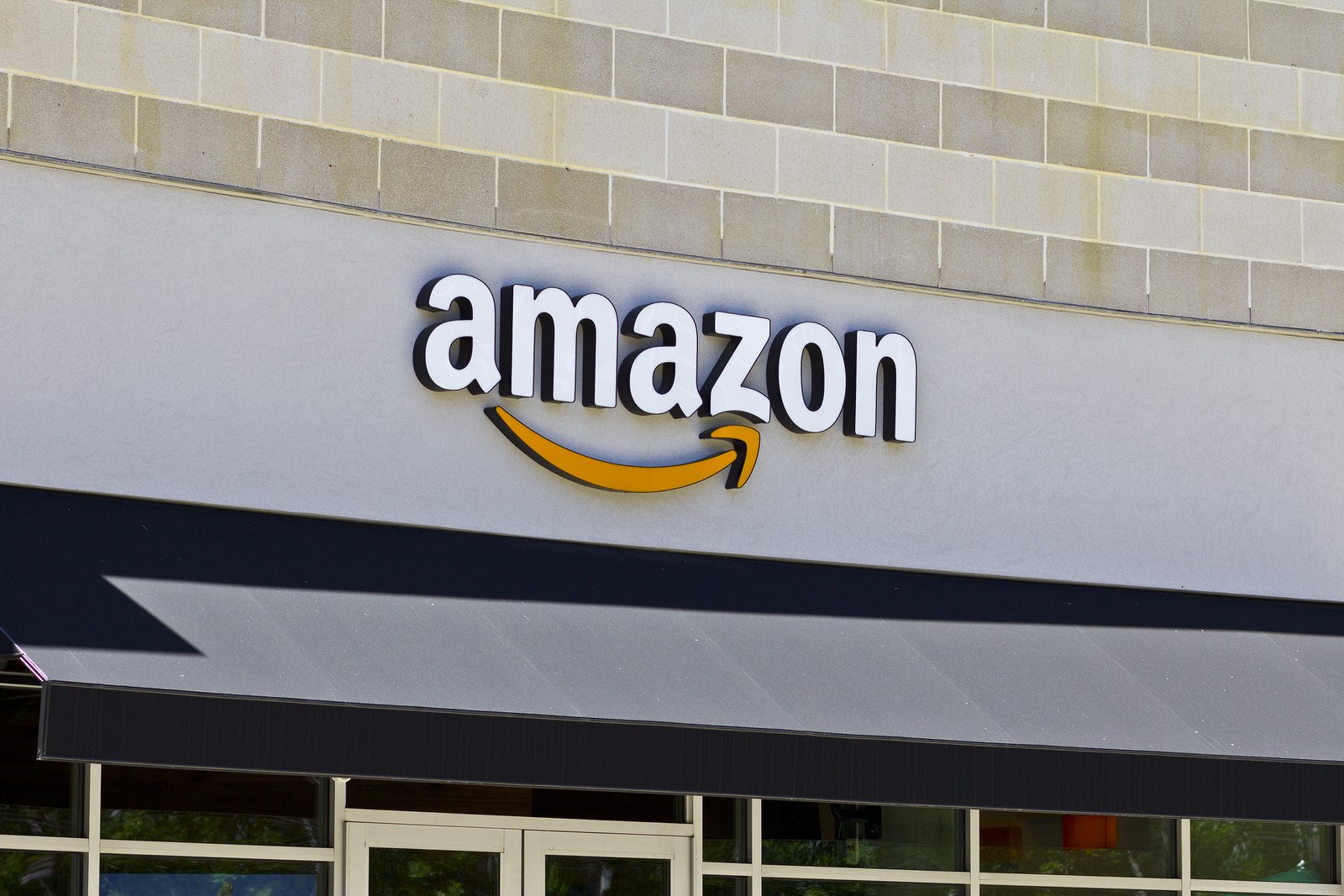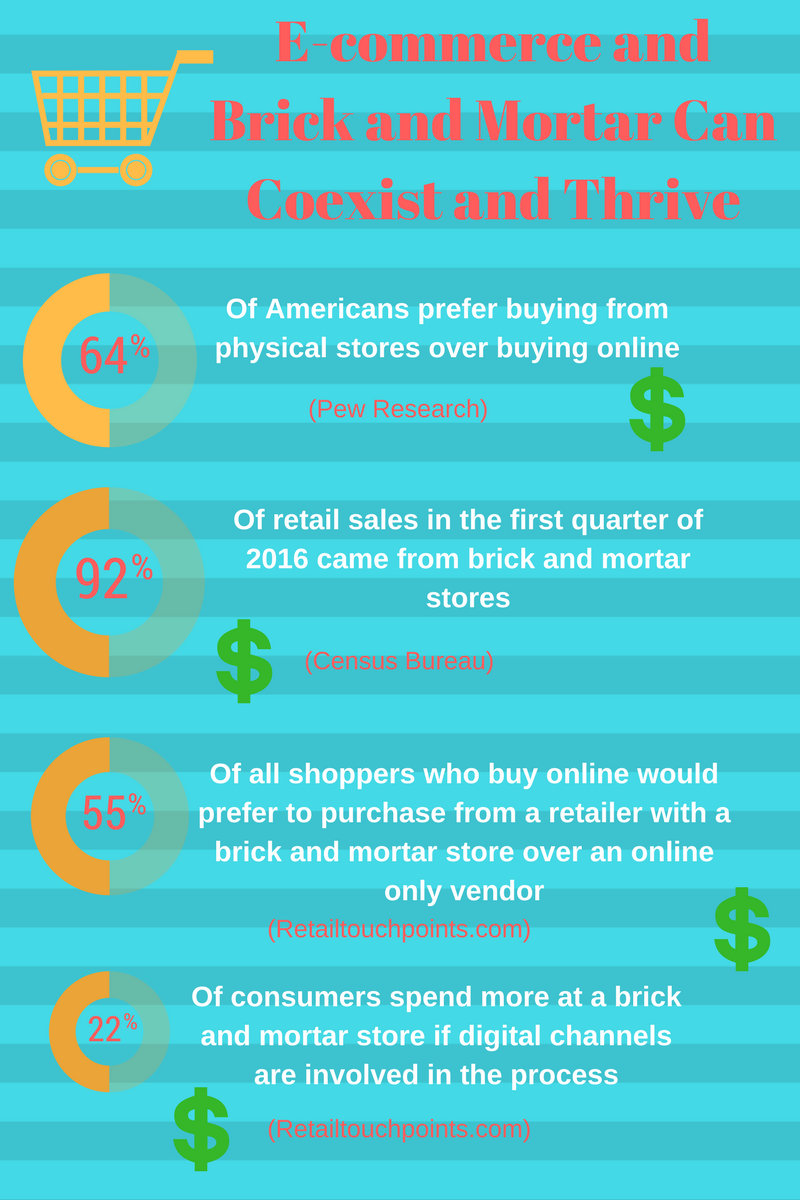 The online shopping phenomenon has been on the minds of many retailers, and become a source of anxiety among many brick and mortar stores. The National Retail Federation expects online sales to increase between 8 and 12 percent in 2017. With the recent growing popularity and booming business for companies such as Amazon, UPS and FedEx, it would be easy for one to feel that we are experiencing an e-commerce vs brick and mortar battle, with e-commerce on the winning end. But just because more people are shopping online these days, it doesn’t mean that e-commerce and brick and mortar can’t co-exist, or that brick and mortar stores are on their way to becoming extinct. For proof that brick and mortar success is still going strong, check out our infographic below:
The online shopping phenomenon has been on the minds of many retailers, and become a source of anxiety among many brick and mortar stores. The National Retail Federation expects online sales to increase between 8 and 12 percent in 2017. With the recent growing popularity and booming business for companies such as Amazon, UPS and FedEx, it would be easy for one to feel that we are experiencing an e-commerce vs brick and mortar battle, with e-commerce on the winning end. But just because more people are shopping online these days, it doesn’t mean that e-commerce and brick and mortar can’t co-exist, or that brick and mortar stores are on their way to becoming extinct. For proof that brick and mortar success is still going strong, check out our infographic below:

E-Commerce vs Brick and Mortar: An Opposite Shift
As a matter of fact, we are now seeing an opposite shift in e-commerce vs brick and mortar. While there are still plenty of brick and mortar retail stores going online, there are now some online retail stores that are beginning to open brick and mortar locations. In November of 2016, Amazon opened a bookstore in Seattle’s University Village, which is the online retail giant’s first brick and mortar location. And they are not alone in this endeavor. An recent article from The Guardian.com entitled The Future of E-commerce: Bricks and Mortar reports that there are at least 20 online companies that have opened brick and mortar stores over the past couple of years. These stores, which include Warby Parker, Bonobos and Casper, sell mostly apparel and specialty items. The main purpose of shifting to brick and mortar as a supplement to online retail is to improve marketing, customer relations, and brand awareness.
There is more to the battle of e-commerce vs brick and mortar than meets the eye. Online traffic has increased tremendously over recent years, which is starting to cost online retailers a pretty penny in online advertising. This is particularly true if there is a high level of competition for the products a company sells, since they must bid on keywords that online shoppers search for. Having a brick and mortar location is becoming an attractive alternative for companies to help build their brand and get the word out. For retailers that sell items such as clothing and jewelry, brick and mortar stores are particularly useful. In some cases, companies are opening brick and mortar stores that serve as showcases to allow customers to see, feel and try items on in person. To save real estate space, a lot of the merchandise still gets purchased online afterwards. Overall, the in person shopping experience is meant to give customers a deeper, more personal experience with the brand that online ads can’t achieve.
More Advantages Brick and Mortar Stores Have Over E-Commerce
In the e-commerce vs brick and mortar battle, there are still plenty of advantages brick and mortar stores have that won’t be going away anytime soon, if ever. Here are some of the reasons many consumers still prefer brick and mortar over e-commerce:
- Many customers do not trust online purchasing, because of issues such as credit card fraud.
- When you are in the market for an item you need right away, brick and mortar is the only option.
- When shopping for something specific, you can get valuable advice from the staff at a brick and mortar store. You simply cannot find this kind of natural human interaction online.
- By buying something in a brick and mortar store, you can be positive it is exactly the item you need and isn’t damaged. Having to ship items back and forth because they arrived damaged or weren’t what you thought can be a huge hassle.
If you own or manage a brick and mortar store, you aren’t automatically on your way out of business because of e-commerce vs brick and mortar competition. You should take advantage of e-commerce as part of your business model, and work on establishing a seamless multichannel experience for your customers. For example, you can use e-commerce and big data to track customer’s shopping habits, and offer them promotions that require them to come to one of the store’s physical locations. You want to be accessible to your shoppers at all times, wherever they are.
Author: Jessica Cody
Jessica Cody, a native of Fairfield County, Connecticut, has a background in online marketing and public relations. Currently, she works at VHMNetwork LLC in the role of Marketing Analyst. She is a graduate of the University of Connecticut, where she studied Journalism and Political Science. She is also an avid runner with a passion for the outdoors.


